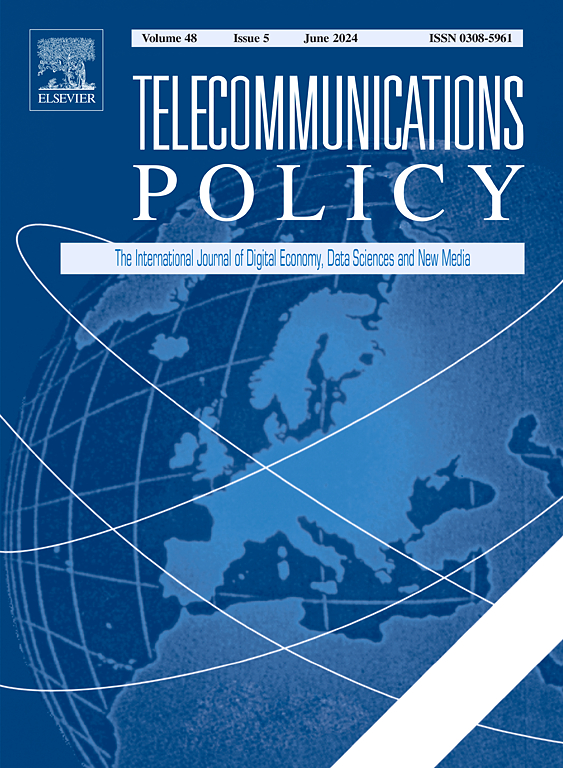自动化频谱共享:自下而上的方法和研究议程
IF 6.4
2区 管理学
Q1 COMMUNICATION
引用次数: 0
摘要
未来的G网络将需要更动态、更灵活的支持,以便在细粒度的基础上管理无线电频谱。实现动态频谱接入(DSA)所需的无线接入网络(RAN)技术在过去20年中取得了重大进展,但实现DSA潜力的挑战需要技术、商业模式和监管政策的共同发展。本文提出了一项多学科的研究工作,以开发推进DSA所需的构建块。我们特别关注基于标准的频谱消费模型(scm)的使用,并审查正在进行的研究,以将scm纳入基于激励兼容、技术合理的频谱接入合同(称为频谱接入协议(SAAs))的自动化管理框架。本文介绍了SCM/SAA框架的核心概念、项目目标,以及框架如何帮助改进频谱管理的初步见解。SCM/SAA的研究代表了一种自下而上的努力,旨在开发技术经济构建模块或工具,以促进基于DSA的频谱共享市场、商业模式和应用的市场化实验和开发。本文章由计算机程序翻译,如有差异,请以英文原文为准。
Automating spectrum sharing: A bottom-up approach and research agenda
Future G networks will require more dynamic, agile support for the management of radio spectrum on a fine-grained basis. The radio access network (RAN) technologies necessary to enable Dynamic Spectrum Access (DSA) have progressed significantly over the past 20 years, but the challenges of realizing the potential for DSA requires the co-evolution of technologies, business models, and regulatory policy. This paper presents a multidisciplinary research effort to develop the building blocks needed to advance DSA. In particular, we focus on the use of standards-based Spectrum Consumption Models (SCMs) and review on-going research to incorporate SCMs in an automated management framework based on incentive-compatible, technically-sound spectrum access contracts referred to as Spectrum Access Agreements (SAAs). This paper introduces the core concepts of the SCM/SAA framework, project goals, and preliminary insights into how the framework can help improve spectrum management. The research on SCM/SAA represents a bottom-up effort to develop the techno-economic building blocks or tools to facilitate market-based experimentation and development of DSA based spectrum sharing markets, business models, and applications.
求助全文
通过发布文献求助,成功后即可免费获取论文全文。
去求助
来源期刊

Telecommunications Policy
工程技术-电信学
CiteScore
10.80
自引率
12.50%
发文量
122
审稿时长
38 days
期刊介绍:
Telecommunications Policy is concerned with the impact of digitalization in the economy and society. The journal is multidisciplinary, encompassing conceptual, theoretical and empirical studies, quantitative as well as qualitative. The scope includes policy, regulation, and governance; big data, artificial intelligence and data science; new and traditional sectors encompassing new media and the platform economy; management, entrepreneurship, innovation and use. Contributions may explore these topics at national, regional and international levels, including issues confronting both developed and developing countries. The papers accepted by the journal meet high standards of analytical rigor and policy relevance.
 求助内容:
求助内容: 应助结果提醒方式:
应助结果提醒方式:


